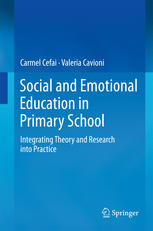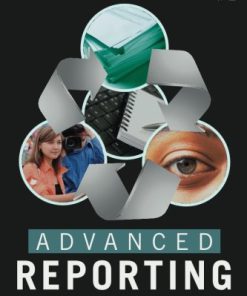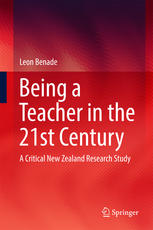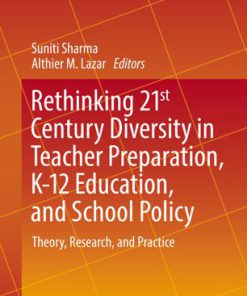Psychosocial Skills and School Systems in the 21st Century Theory Research and Practice 1st Edition by Anastasiya A Lipnevich, Franzis Preckel, Richard D Roberts ISBN
$50.00 Original price was: $50.00.$25.00Current price is: $25.00.
Psychosocial Skills and School Systems in the 21st Century Theory Research and Practice 1st Edition by Anastasiya A Lipnevich, Franzis Preckel, Richard D Roberts – Ebook PDF Instant Download/Delivery:
Full download Psychosocial Skills and School Systems in the 21st Century Theory Research and Practice 1st Edition after payment

Product details:
ISBN 10:
ISBN 13:
Author: Anastasiya A Lipnevich, Franzis Preckel, Richard D Roberts
Psychosocial Skills and School Systems in the 21st Century Theory Research and Practice 1st Table of contents:
Part I: General Background: Theory and Guiding Principles
Chapter 1: Psychosocial Skills: Essential Components of Development and Achievement in K-12
1.1 Introduction
1.2 Performance Skills: “Getting Along” with School
1.2.1 Conscientiousness and Related Skills
1.2.2 Openness to Experience and Related Skills
1.3 Interpersonal Skills: Getting Along with Others
1.3.1 Extraversion and Related Skills
1.3.2 Agreeableness and Related Skills
1.4 Self-management Skills: Getting Along with Yourself
1.4.1 Emotional Stability
1.5 What’s Missing? Cross-Cultural Competence (3C)
1.6 Can Psychosocial Skills Be Improved?
1.7 Conclusion
References
Chapter 2: Test Standards and Psychometric Modeling
2.1 Introduction
2.2 Psychological Assessment: Process and Standards
2.2.1 Psychological Assessment as Process
2.2.2 The Standards
2.3 Test Standards, Score Reliability, and Psychometric Models
2.3.1 Confirmatory Factor Analysis
2.3.2 Psychometric Models and Reliability
2.3.3 Application and Interpretation of Model-Based Estimates of Reliability
2.4 Challenges and Outlook
2.4.1 Response Styles and Sets
2.4.2 Bandwidth-Fidelity Problem and Test-Criterion Correlations
2.5 Conclusion
References
Chapter 3: Aligning Mission and Measurement
3.1 Introduction
3.2 The Mission of Schools
3.3 Measuring Broader Skills and Competencies
3.4 Emotional Development
3.5 Assessing Effective Citizenship
3.6 Policy Implications of Aligning Mission and Measurement
3.7 Conclusion
References
Chapter 4: Personality Development During the School-Aged Years: Implications for Theory, Resear
4.1 A Developmental Trait Taxonomy
4.2 Personality Continuity and Change
4.2.1 Rank-Order Stability
4.2.2 Mean-Level Change
4.2.3 Individual-Level Change
4.2.4 Ipsative Continuity
4.3 Explanations for Developmental Patterns
4.4 Implications for the Academic Domain
4.5 Conclusion
References
Part II: Psychosocial Skills: Key Constructs
Chapter 5: The Need for Cognition: Key Concepts, Assessment, and Role in Educational Outcomes
5.1 Definitions and Background
5.2 Relationships with Other Similar Psychosocial Constructs
5.2.1 Typical Intellectual Engagement
5.2.2 Openness to Ideas
5.2.3 Epistemic Curiosity
5.2.4 Further Thoughts on the Relationships of NFC with TIE, OI, and EC
5.3 Measurement of NFC
5.3.1 The Dimensionality of NFC
5.3.2 NFC Measure Formats
5.4 The Role of NFC (and Related Constructs) in Learning and Education
5.4.1 Reading
5.4.2 Deep Versus Surface Learning (and Learning Motivation)
5.4.3 Academic Performance
5.4.4 Interests and Attitudes
5.5 Practical Implications: Cultivating NFC in Classroom
5.6 Conclusion
References
Chapter 6: Understanding Creativity in the Schools
6.1 Understanding Creativity in the Schools
6.2 Creativity: Definitions and Core Concepts
6.3 The Four-C Model
6.3.1 Big-C Approaches
6.3.2 Little-c Approaches
6.3.3 Beyond Big and Little
6.3.4 Mini-c Creativity in the Classroom
6.4 Creativity and Achievement
6.4.1 Relation of Creativity and Achievement
6.4.2 The Role of Teachers
6.5 Assessment of and for Creativity
6.6 Creative Metacognition
6.7 Concluding Summary and Resources
6.7.1 Summary of Key Insights
6.7.2 Creativity Resources for Educators
References
Chapter 7: Conscientiousness in Education: Its Conceptualization, Assessment, and Utility
7.1 Introduction
7.2 Nature of Conscientiousness
7.2.1 Definition and the Structure of Conscientiousness
7.2.2 Theoretical Models of Conscientiousness
7.2.3 Empirical Investigations of the Structure of Conscientiousness
7.3 Related Constructs
7.3.1 Grit
7.3.2 Time Management
7.3.3 Perfectionism
7.4 Conscientiousness and Academic Outcomes
7.4.1 Bandwidth-Fidelity Debate
7.4.2 Self-and Other Ratings of the Student
7.4.3 Teacher Conscientiousness
7.5 Application of Conscientiousness in Education
7.5.1 Large-Scale Assessment and International Comparison
7.5.2 Selection
7.6 Traditional and New Approaches to Assessing Conscientiousness
7.6.1 Self-Report Scales
7.6.2 Alternative Methods of Assessment
7.7 Developmental Trajectories for Conscientiousness
7.8 Enhancing Conscientiousness
7.9 Conclusions
References
Chapter 8: Self-Concept: Determinants and Consequences of Academic Self-Concept in School Context
8.1 Introduction
8.2 Self-Concept: Core Characteristics
8.2.1 Definition, Structure, and Measurement of Self-Concept
8.2.2 Stability/Malleability of Self-Concept
8.3 Academic Self-Concept: Predicting Important Academic Outcomes
8.3.1 Academic Self-Concept, Academic Achievement, and Academic Choices
8.3.2 Negative Consequences of an Overly High Self-Concept
8.4 Social, Dimensional, and Temporal Comparisons as Determinants of Academic Self-Concept
8.4.1 Social Comparison Processes
8.4.1.1 The Big-Fish-Little-Pond Effect
8.4.1.2 Counterbalancing Effects: Does the Ranking or Reputation of the School Predict Self-Conce
8.4.1.3 Do Class Characteristics Interact with Individual Student Characteristics?
8.4.2 Dimensional Comparison Processes: The I/E-Model
8.4.3 Temporal Comparison Processes
8.4.4 Multiple Frames of Comparison: A Complex Pattern of Influences
8.5 Socializers’ Feedback, Expectancy Effects, and Gender Stereotypes
8.6 Self-Concept and Value Beliefs: Processes of Mutual Impact and Dedifferentiation
8.6.1 Expectancy-Value Theory
8.6.2 Associations Between Self-Concept and Value Components
8.6.3 Predicting Academic Outcomes
8.7 Educational Implications
8.7.1 High Academic Self-Concept: A Powerful Resource
8.7.2 Changing Educational Structures
8.7.3 Appropriate Cultures of Feedback: The Impact of Teachers
8.7.4 Psychosocial Intervention Studies
8.8 Conclusion
References
Chapter 9: Applying Social Cognitive Theory in the Development of Self-Regulated Competencies Thr
9.1 Applying Social Cognitive Theory in the Development of Self-Regulated Competencies Throughout
9.2 Social Cognitive Theory
9.2.1 Triadic Model
9.2.2 Observational Learning
9.2.3 Self-Efficacy
9.3 Models of Self-Regulated Learning
9.3.1 Winne’s Model
9.3.2 Boekaerts’ Model
9.3.3 Pintrich’s Model
9.3.4 Zimmerman’s Model
9.4 The Development of Self-Regulatory Competence
9.5 Developmental Trends, Self-Regulatory Processes, and Applications in K-12 Learning Settings
9.5.1 Developmental Trends: K-2 Grades
9.5.2 Developmental Trends: Third to Fifth Grades
9.5.3 Developmental Trends: Sixth to Eighth Grades
9.5.4 Developmental Trends: Ninth to Twelfth Grades
9.6 Where Do We Go From Here?
9.6.1 Educational Implications
9.6.2 Implications for Future Research
9.7 Conclusion
References
Chapter 10: Student Motivation: Current Theories, Constructs, and Interventions Within an Expectan
10.1 Introduction
10.2 Review of Theoretical Constructs and Research on Expectancy-Related Beliefs
10.2.1 Self-efficacy
10.2.2 Expectancies
10.2.3 Self-concept
10.2.4 Perceived Control
10.2.5 Attributions
10.2.6 Implicit Theories of Intelligence
10.2.7 Expectancy-Related Beliefs and Learning Outcomes
10.3 Review of Theoretical Constructs and Research on Values
10.3.1 Subjective Task Values
10.3.2 Intrinsic and Extrinsic Motivation and Value
10.3.3 Human Values and Psychological Needs
10.3.4 Values and Learning Outcomes
10.4 Review of Theories that Integrate Expectancy and Value Constructs
10.5 Intervention Drivers: Research-Based Sources of Students’ Expectancies, Values, and Costs
10.6 Interventions and Programs that Foster Motivation
10.6.1 Expectancy Interventions
10.6.2 Value Interventions
10.6.3 Cost Interventions
10.6.4 Multicomponent Interventions
10.7 Caution: One Size Does Not Fit All
10.8 Conclusion
References
Chapter 11: Academic Emotions and Their Regulation via Emotional Intelligence
11.1 Introduction
11.2 Defining and Classifying Academic Emotions
11.3 Assessing Academic Emotions
11.4 Relationship Between Academic Emotions and Key Constructs
11.4.1 Theoretical Model: Control-Value Theory of Achievement Emotions
11.4.2 Academic Emotions and Achievement
11.4.3 Antecedents of Academic Emotions
11.5 Emotional Intelligence as a Central Approach for Regulating Academic Emotions
11.6 A Model for the Promotion of Emotional Intelligence in Learning and Achievement Situations
11.6.1 Defining Emotional Intelligence in the PEILAS Model
11.6.2 Basic Assumptions of the PEILAS Model
11.6.3 Fostering Emotional Intelligence According to the PEILAS Model
11.7 Conclusion
References
Part III: Psychosocial Skills: Applications
Chapter 12: Fostering Psychosocial Skills: School-Based Promotion of Resiliency in Children and A
12.1 School-Based Promotion of Resiliency in Children and Adolescents
12.1.1 The Role of Resilience in Schools
12.2 Conceptualizing Resiliency for Applications in School Settings
12.2.1 Three-Factor Model of Personal Resiliency
12.2.2 Need for Resiliency Assessment in the Schools
12.3 Resiliency Interventions at Different Levels of Implementation
12.3.1 Applications at the School or Systems Level
12.3.2 Applications at the Classroom Level
12.3.3 Applications at the Individual Level
12.4 Summary
References
Chapter 13: Teaching Emotional Intelligence in Schools: An Evidence-Based Approach
13.1 Introduction
13.1.1 Emotions Matter
13.1.2 Emotion Regulation
13.2 Emotion Regulation Development from Infancy to Childhood
13.2.1 Teaching Emotional Intelligence with RULER
13.2.2 RULER’s Approach for Teaching Emotion Regulation
13.2.3 Measuring Emotion Regulation Skills
13.2.4 Conclusion
References
Chapter 14: Psychosocial Skills in Large-Scale Assessments: Trends, Challenges, and Policy Implica
14.1 Introduction
14.2 Leading International and National Large-Scale Assessments
14.3 Psychosocial Skills in Large-Scale Assessments
14.4 The Shifting Role of Variables Measured with Questionnaires in Large-Scale Assessments
14.5 Education Policies that Can Help Promote Psychosocial Skills
14.5.1 Japan: Reforming Curricula to Consider the Importance of Psychosocial Skills
14.6 Challenges and the Promise of Better Measurement
14.6.1 New Item Formats
14.6.2 Improved Questionnaire Pretesting
14.6.3 Matrix Sampling for More Efficient Questionnaire Designs
14.7 Summary and Conclusions
References
Part IV: Conclusions
Chapter 15: Psychosocial Constructs: Knowns, Unknowns, and Where do we go From Here?
15.1 Psychosocial Skills as Effective Predictors of Academic Success
15.2 Psychosocial Skills as Meaningful Outcomes in Their Own Right
15.3 An Organizing Framework for Psychosocial Skill Assessment and Development
15.4 On the Issue of Malleability of Psychosocial Skills
15.5 Policy Implications and Future Directions
People also search for Psychosocial Skills and School Systems in the 21st Century Theory Research and Practice 1st:
psychosocial skills and school systems in the 21st century
what are 21st century skills in education
what are the 21st century life skills
psychosocial development in school age child
psychosocial development school age
Tags:
Anastasiya A Lipnevich,Franzis Preckel,Richard D Roberts,Psychosocial Skills,School Systems,Research
You may also like…
Politics & Philosophy - Politics
Education Studies & Teaching
Politics & Philosophy - Social Sciences
Science (General)
Teaching secondary school mathematics research and practice for the 21st century Geiger
Reference - Writing
Advanced Reporting Essential Skills for 21st Century Journalism 1st Edition Miles Maguire
Education Studies & Teaching
Education Studies & Teaching
Politics & Philosophy - Warfare & Defence












